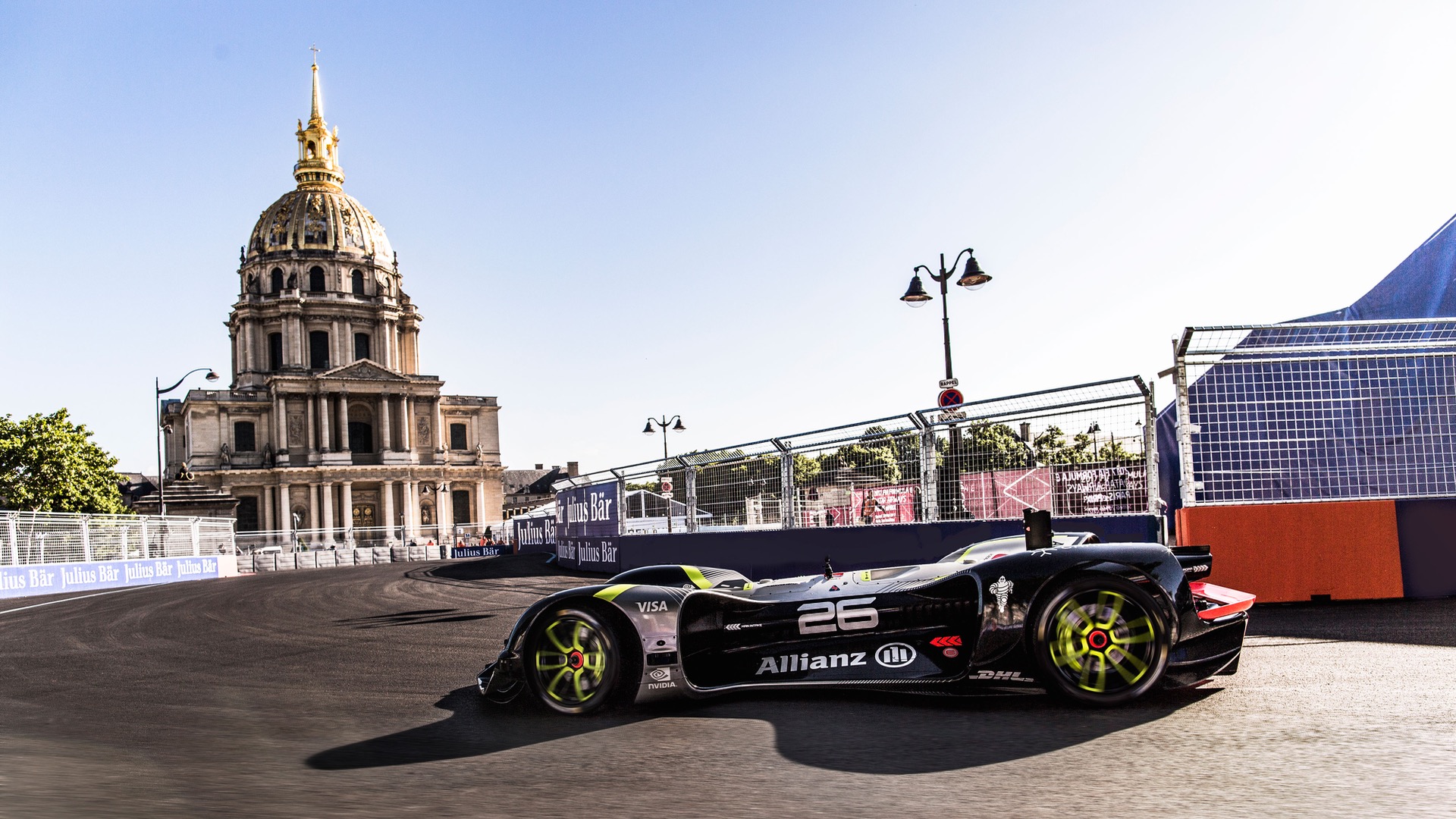

Roborace unveiled its autonomous electric race car at the 2017 Mobile World Congress in February, but the vehicle dubbed “Robocar” just turned a wheel in public for the first time this past weekend.
The car performed a demonstration run on the street circuit set up for the Paris Formula E ePrix (that’s what Formula E calls its races). Roborace has done public demonstrations before, but they used development mules known as “DevBots,” rather than the actual vehicle Roborace plans to use in its autonomous-car race series.
The demonstration was a preview of Roborace’s plans in more ways than one. Roborace plans to run as a support series for Formula E—so, in addition to the use the Robocar, any Roboraces will have a similar format. They’ll be run on the same temporary street circuits as Formula E races, over the course of the same race weekends.
But Robocar’s first public outing proved that Roborace still has a long way to go. The car negotiated the track very slowly, and even stopped at one point, according to Motorsport.com. This was because the car’s handlers were concerned that it was getting too close to barriers in one turn, and wanted to check the accuracy of the line the car was taking, Roborace CTO Bryn Balcombe said.
Based on what Roborace has said about the car so far, it should have plenty more potential. Officials promise a top speed of around 198 miles per hour. The car is propelled by four 300-kilowatt (402-horsepower) electric motors, and uses an array of ultrasonic sensors, cameras, and LIDAR units to navigate its environment. The futuristic design was penned by Daniel Simon, who previously designed vehicles for Hollywood movies like Tron: Legacy and Oblivion.
It’s hard to predict what will become of Roborace. The series needs to develop its technology to the point where cars can do more than just a handful of demonstration runs, not to mention sign up teams and sponsors for something that has no locked-in earning potential.
Basing a race series off a hot industry trend is no guarantee of success, as Formula E has found with its efforts to promote electric race cars. That series has found traction because it allows manufacturers to project a green image, and develop their expertise with electric powertrains. It’s possible Roborace could do the same for self-driving cars, serving as a testbed for the technology and a form of advertising for automakers.
Another x-factor: Roborace is taking things a step further than Formula E by removing the human element—one of the things that makes racing interesting in the first place. While existing race series have had their own problems keeping fans involved, it’s unclear whether completely removing human drivers from the equation is the answer.